Sofia is a city of many layers, above all when it comes to architecture. From the ‘60s on, the Bulgarian Communist Party embraced the sleek and angular forms of the Modernist aesthetic, and many of these striking structures remain standing today.
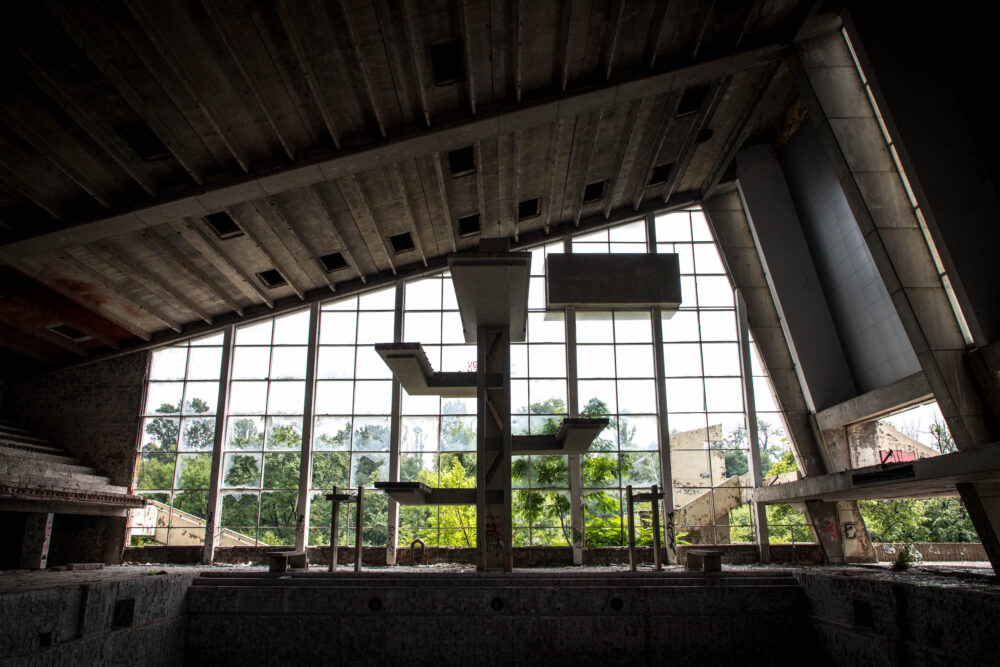
The “Red Banner” Swimming Complex, Sofia (Photo: Darmon Richter)
After Rome and Athens, Sofia is the third oldest capital in Europe, the original Thracian settlement dating from sometime around the 6th century BCE. Then known as “Serdica,” the Romans conquered the city in 29 BCE – and it grew into a major administrative hub. At one point, Constantine the Great allegedly considered choosing Serdica, instead of Constantinople, to be the capital of the Byzantine Empire. Over the millennia, Sofia’s architectural character has been influenced by the Romans and Byzantines, the Ottomans, Austro-Hungarians and the Soviets. Orthodox domes rise above ancient ruins, while minarets rub shoulders with socialist housing blocks.
From 1946, in the aftermath of WWII, until the “Changes” that began in 1989, Bulgaria was a socialist state ruled by the BCP. Particularly from the 1960s onwards, the internationally popular Modernist aesthetic became a kind of visual branding for the new society they were trying to build, as they raised grand theatres and “palaces of culture,” sports venues, housing blocks and hotels. In this article we take a look at 10 of the most noteworthy Modernist buildings still to be seen in Sofia.
Hotel Rila
Since its opening in 1961, Hotel Rila has been a Sofia institution. Located close to the city centre, it was built by one of the country’s most famous architects. Georgi Stoilov served as an antifascist partisan during WWII, going on to study architecture in Sofia, Moscow and Paris, and later serving for a time as the mayor of Sofia. Hotel Rila was his first major commercial work. Originally operated by the state, the hotel was privatised in 2000, and since then there have been various rumours about attempts to significantly redevelop the site – including one alleged plan to replace Hotel Rila with a new, 22-storey business hotel. No such plan has yet come to pass, though Rila has already seen significant redevelopment to its interior. In the mid-2010s the original wood-panelled lobby was replaced with a more contemporary look, but on upper floors there are conference spaces and guest rooms which still retain the original vision, with carved wood panels, tiling, and Modernist light fittings.
ul. “Tsar Kaloyan” 6, 1000, Sofia
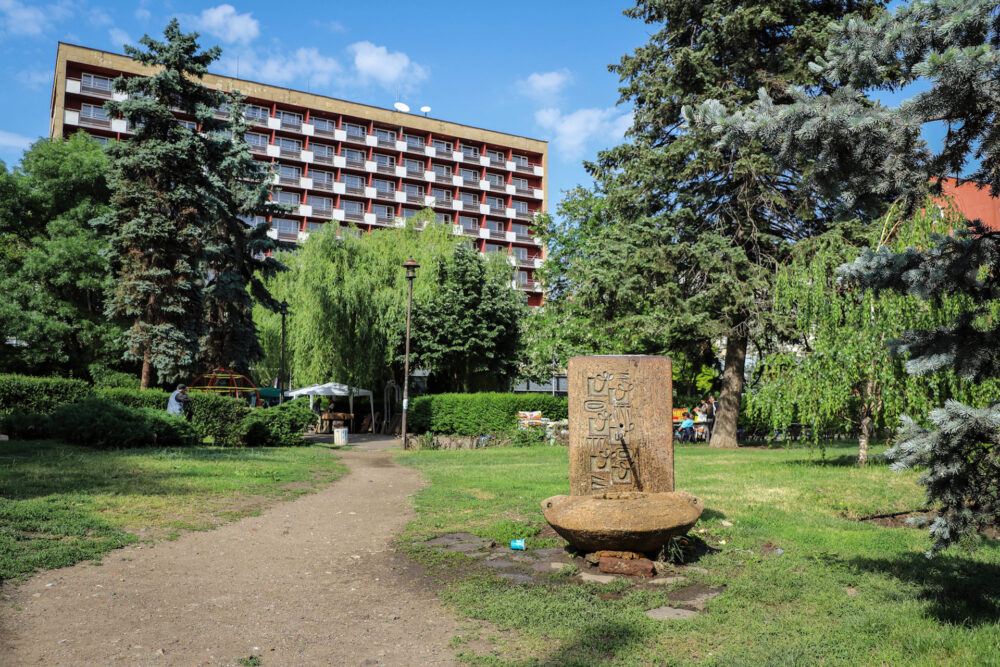
The Hotel Rila, Sofia, Bulgaria (Photo: Darmon Richter)
Bulgarian National Radio (BNR)
A later work by the same architect, the headquarters for Bulgarian National Radio (BNR) was completed by Georgi Stoilov and team in 1972. Located just south of the river, it overlooks the park Borisova Gradina – with a design that resembles an inverted stepped pyramid. In interviews, the architect Stoilov (who passed only recently, in December 2022) often expressed his interest in the theme of ancient civilisations. The interior of his Buzludzha Memorial House recalls the pantheon in Rome; at Gurgulyat he built a monument in the form of a Mesopotamian ziggurat; and here, his Sofia building for the Bulgarian National Radio was supposed to resemble the step pyramids of Egypt or Mexico.
bul. “Dragan Tsankov” 4, 1164, Sofia
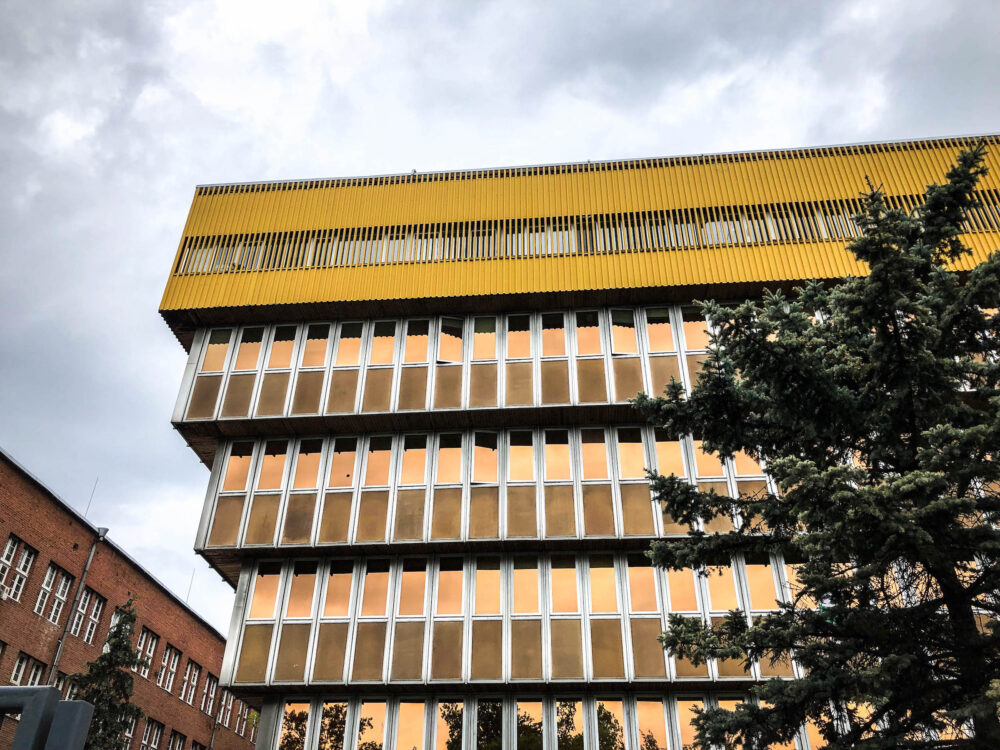
Bulgarian National Radio, Sofia (Photo: Darmon Richter)
“Festivalna” Sports Hall
Located in the east of Sofia, in Geo Milev Park, the building known today as the ASICS Arena was originally opened as the “Festivalna” Sports Hall. Designed by architects Ivan Tatarov and Doncho Vladishki, the hall was constructed from 1967-1968 and, on its front and back ends, it features stylised bas-reliefs of athletes in motion (designed by the artists Galin Malakchiev, and Vesa Voinska and Rositsa Todorova, respectively). With its raw concrete finish and clear exhibition of form throughout, it is considered one of the earliest and most iconic examples of Brutalist architecture in Sofia. Unfortunately, however, the style is not widely appreciated in contemporary Sofia, and much of the hall’s concrete exterior has been hidden under canvas sheets – while an area at the rear of the building has been used as a rubbish dump.
ul. “Manastirska” 35, 1111, Sofia
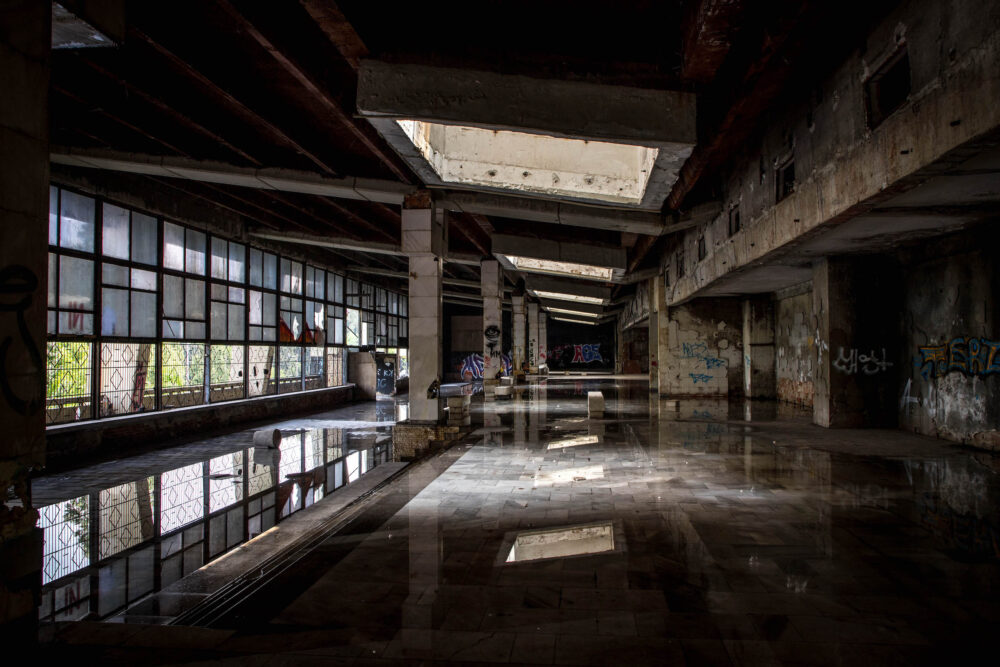
Inside the “Red Banner” Swimming Complex, Sofia (Photo: Darmon Richter)
“Red Banner” Swimming Complex
When the “Red Banner” Swimming Complex was opened in 1985, it was considered one of the largest such facilities in Balkans – a leisure centre equipped with five pools (both indoor and out) as well as an onsite hotel. It was designed by architect Gancho Ganchev and collective, with some of its main elements (including the large, angular shelter over the double indoor pool) built in the Brutalist style. However, the formerly state-owned site never quite found its footing after Bulgaria transitioned to democracy. It still saw use until 2012, but rising maintenance costs and the growing urgency for renovation (both aesthetic and structural) led to its closure, and in 2015 these processes ground to a halt; leaving the building abandoned and in a state of severe decline.
bul. “Asen Yordanov,” 1113, Sofia
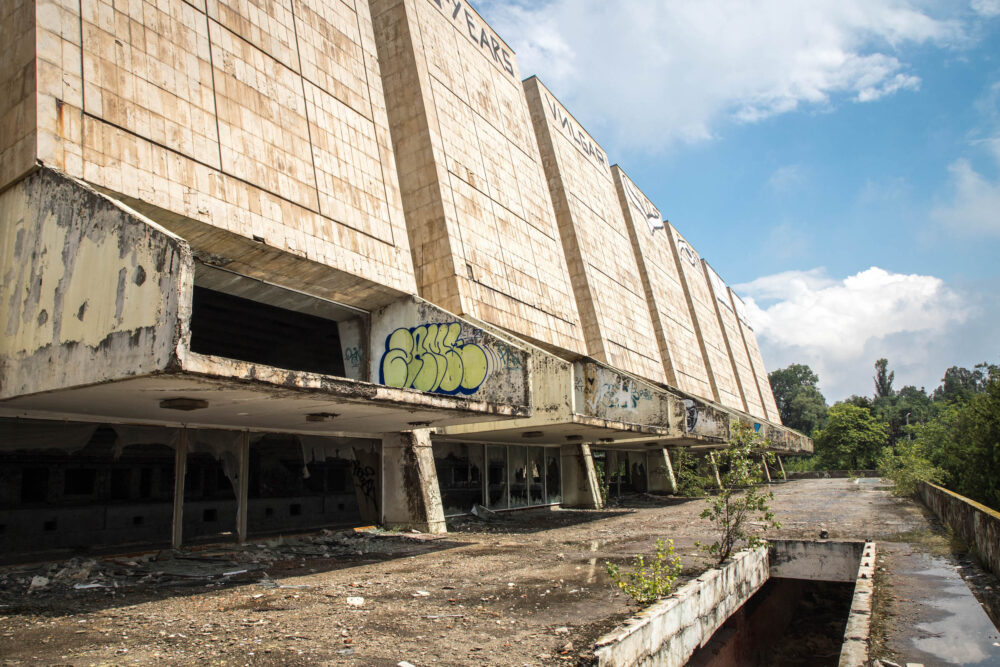
“Red Banner” Swimming Complex, Sofia (Photo: Darmon Richter)
National Palace of Culture (NDK)
The First Bulgarian State was officially established in 681 CE, and in 1981, the ruling Bulgarian Communist Party organised nationwide festivities to celebrate “1300 Years of Bulgaria.” A remarkable number of new monuments and memorial houses were opened that year, and most prominent of all was the new Palace of Culture built adjacent to Bulgaria Boulevard, in the heart of Sofia. Over the course of three years, an architectural team led by Alexandar Barov oversaw the construction of an eight-floor building with three underground levels, containing 12 multifunction halls (the largest able to seat 4,000 people), in addition to offices, exhibition spaces, and restaurants. The locals call it “NDK” (from the Bulgarian “Natsionalen Dvorets na Kulturata”), and it was said that the building’s infrastructure contains more steel than the Eiffel Tower. Of all Sofia’s Socialist-Modernist landmarks, NDK is one of those that best survived the transition to democracy after 1989. The building is kept in excellent condition today (partially funded by letting out premises to brands such as Costa Coffee) and as a venue it has hosted international acts including Dream Theater, ELO, Thin Lizzy, Andrea Bocelli, and many others.
bul. Bulgaria, 1463, Sofia
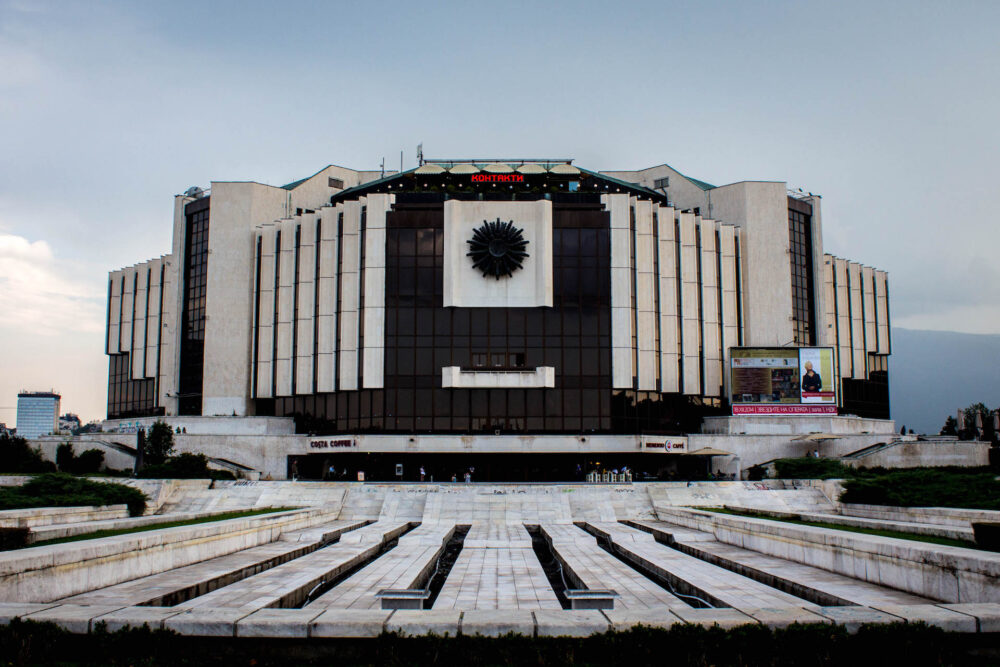
The National Palace of Culture (NDK) in Bulgaria (Photo: Darmon Richter)
“Universiada” Sports Hall
This indoor sports arena is still in regular use – it features seating capacity for 4,000 spectators, and serves today as home venue for the Levski Sofia basketball team. It is also a fine example of Sofia’s Modernist heritage. Constructed from 1960-1961, it was designed by the architectural team of Alexandar Barov, Ivan Tatarov, Doncho Vladishki and Ivan Ivanchev. On a rear wall of the building, a ceramic relief titled “The Basketball Players” (by celebrated Bulgarian sculptor Lyubomir Dalchev) adds a touch of colour to the otherwise white exterior.
bul. “Shipchenski Prohod” 2, 1113, Sofia
Bulgarian Foreign Trade Bank
The building that now serves as the headquarters for UniCredit Bulbank was originally conceived as the Bulgarian Foreign Trade Bank. It enjoys a central location overlooking the “Largo” – a Socialist-Classical plaza including the former Communist Party House – and stands alongside the more recent statue of Saint Sofia, the city’s namesake. The building straddles two eras: the plan by architects Vladimir Romenski and Kremena Romenska was selected by a design contest in 1970 and developed soon after – though construction was delayed until the early 1990s. In 1992 the state-owned Bulgarian Foreign Trade Bank evolved into a universal commercial bank, in 1994 it rebranded as Bulbank, and following an international merger in 2007 it became UniCredit Bulbank. The building is notable in the way it merges the blocky and austere shapes of Socialist-Modernism with ideas from Balkan vernacular architecture: including arched windows, and the impression of a chardak-style overhanging balcony.
pl. “Sveta Nedelya” 7, 1000, Sofia
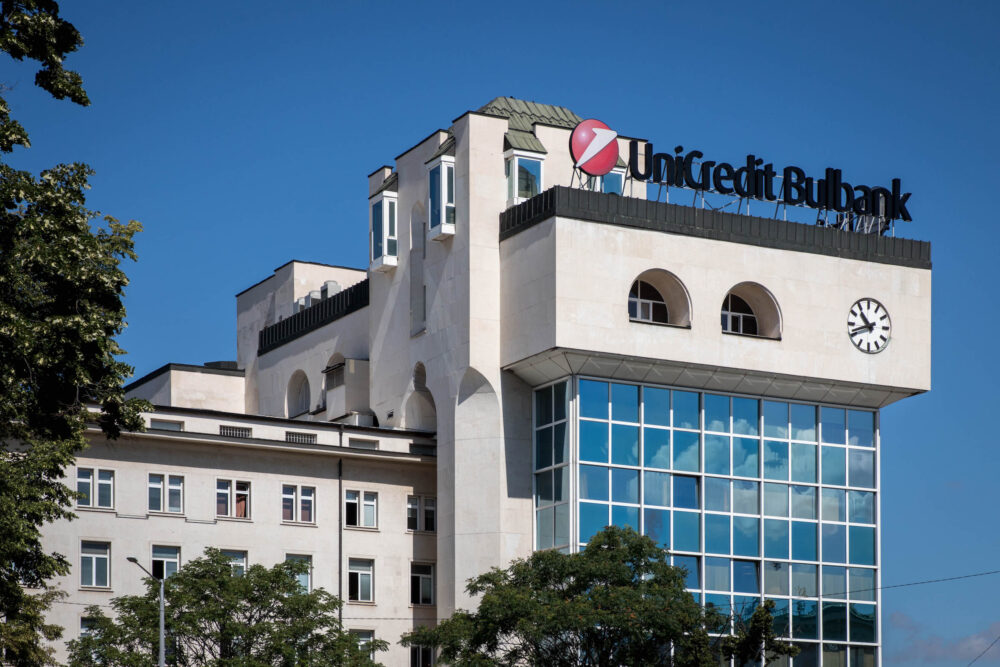
UniCredit Bulbank, formerly Bulgarian Foreign Trade Bank (Photo: Darmon Richter)
Sofia Theatre
The theatre in Zaimov Park was completed in 1966, to the design of architect Zhivko Zhekov. The largest of Sofia’s municipal theatres, the venue is compact and dynamic, and recently celebrated its 50th anniversary. An original marble lobby inside leads to a main hall (with seating for 319 spectators) and a chamber hall (with 49 seats), as well as several spaces for experimental theatre performances. The building’s exterior design combines striking geometric forms with folksy reliefs, to create an iconic example of Sofia’s Modernist heritage.
bul. “Yanko Sakazov” 23а, 1504, Sofia
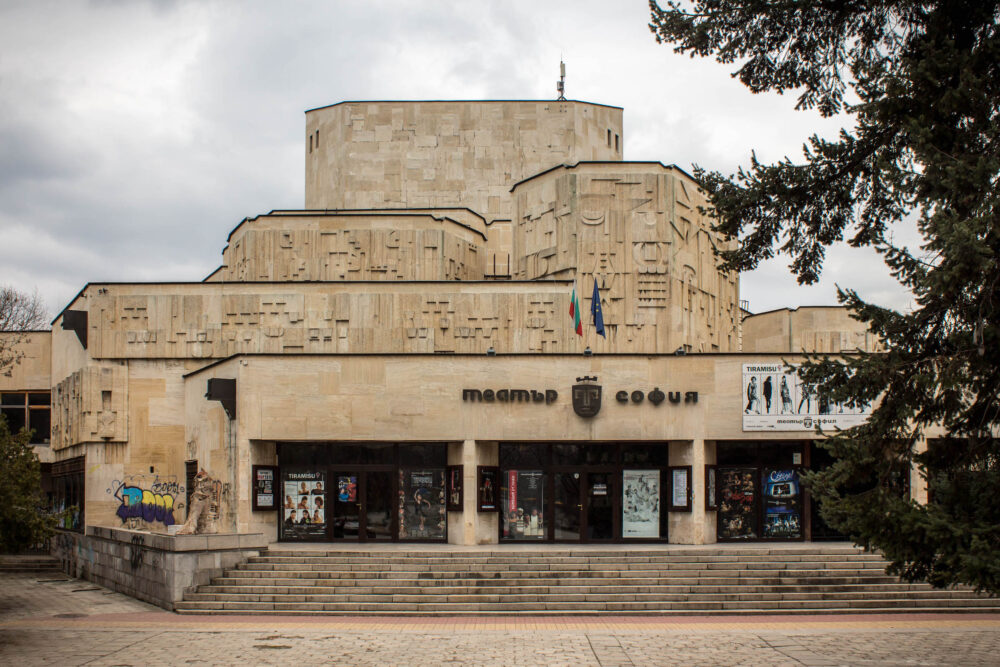
The Sofia Theatre (Photo: Darmon Richter)
Boyana Residence
Todor Zhivkov ruled as leader of the Bulgarian Communist Party for a period of 35 years. He had many private residences across the country, from the Black Sea coast, to various mountain and forest retreats; though his official primary residence was in the Boyana neighbourhood on the edge of Sofia, sitting at the foot of Vitosha Mountain. Zhivkov’s Boyana Residence was a Modernist palace designed by architect Alexandar Barov (who later worked on the National Palace of Culture), completed in 1974. Today the building hosts Bulgaria’s National Museum of History, which was founded in 1973 then moved to these premises in 2000. While the current museum features an impressive selection of artefacts and excavated treasures illustrating the history of Bulgaria, for architecture fans it will likely be the building itself that remains the chief attraction – decorated to the former dictator’s tastes and featuring marble staircases, wood-panelled ceilings, lavish Modernist chandeliers, and an impressive selection of original artworks.
Rezidentsia Boyana, 1618, Sofia
“Zona B-5” Residential Complex
In the years after WWII, Bulgaria underwent rapid development from a largely agrarian society into urban industrialisation. New factories were built, and cities were vastly expanded with the erection of self-contained housing districts known as mikrorayons. Designed to house a utopian new form of society, these residential housing projects were where many of the country’s most famous architects first cut their professional teeth. Today, the towering residential blocks built by the BCP represent the largest remaining material trace of Bulgaria’s great socialist building project. However, in many cases their current condition leaves much to be desired – as the architecture critic Owen Hatherley commented, in Sofia “sculptures of workers are put in museums while the former workers’ districts rot.” Although every city has its own neighbourhoods, Zona B-5 in Sofia is a particularly striking example of this form of Modernist mass housing, here designed by a collective of architects between 1973-1985.
“Zona B-5,” 1303, Sofia
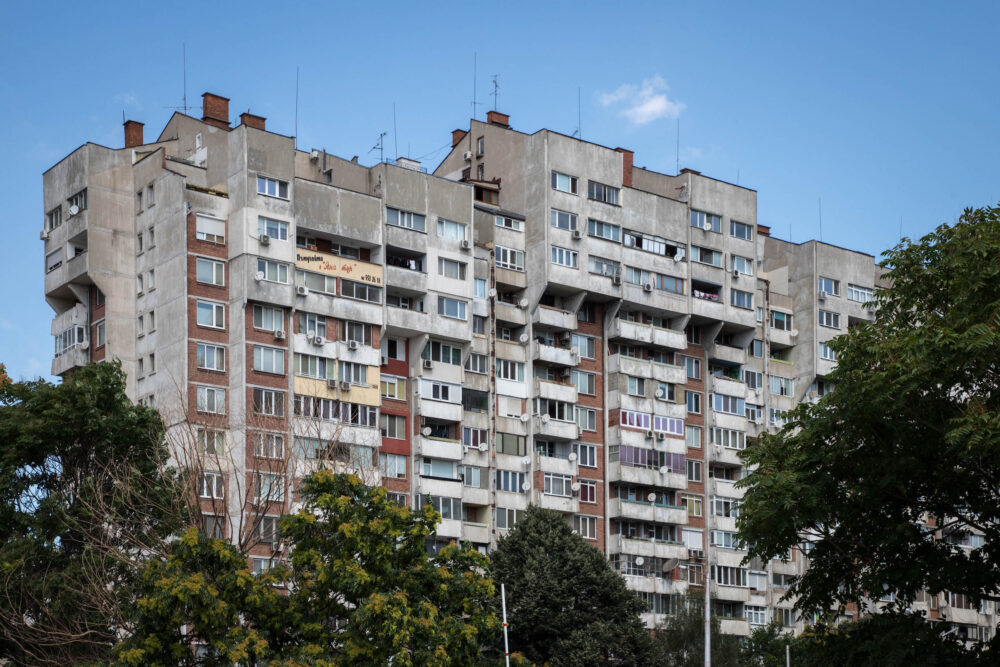
The “Zona B-5” Residential Complex in Sofia (Photo: Darmon Richter)